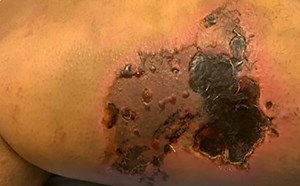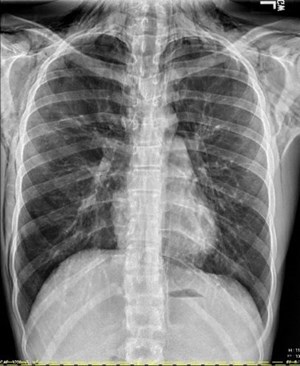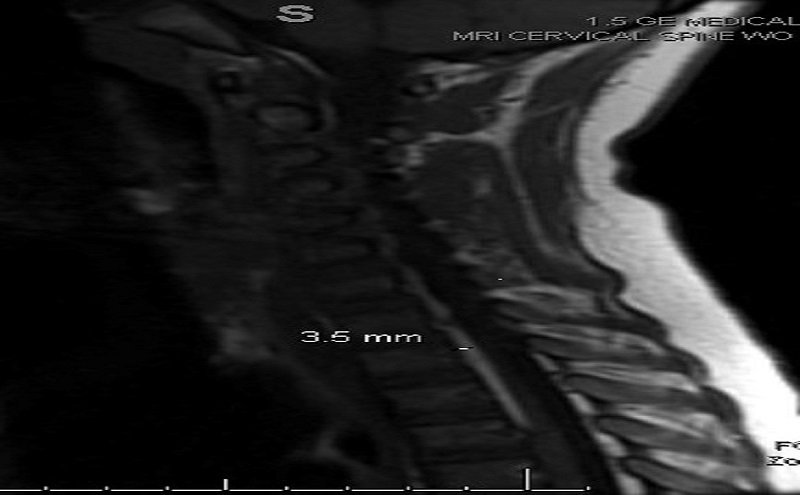
3rd Place Emage Winner: A Case of Neck Pain
Roxanne Cheung, MD
New York Presbyterian Queens Hospital
Patient Presentation
A 10-year-old boy with no significant medical history arrives for worsening left neck pain 2 weeks prior. He was admitted 2 weeks ago for a traumatic, unhelmeted fall off a bicycle. He received a computed tomography (CT) head scan, 2 fast brain magnetic resonance imaging studies (MRIs) and an MRI of the cervical spine that revealed a stable right tempo-parietal skull fracture with an underlying, stable epidural hematoma, scattered left subdural hematomas along the tectorial membrane, and subarachnoid hemorrhage. He was evaluated by neurosurgery and conservative management was recommended. He was started on levetiracetam for seizure precautions, evaluated by physical therapy, occupational therapy, and cleared for discharge after 48 hours.
The mother stated the neck pain started on the day of discharge. The patient had been keeping his head in the same position due to pain, even when sleeping. The mom noticed a slight head tilt towards the left. The patient stated his neck felt best when it was midline but required assistance to maintain midline. There were no new fevers, subsequent fall, traumas, sore throat, rash, headache, or changes in vision.
Examination revealed an awake, alert boy, able to ambulate, with his head slightly rotated towards the left with a very slight chin tilt to the left. There was a tenderness and stiffness along the left sternocleidomastoid muscle. There was cervical paraspinal tenderness, no midline cervical tenderness with no other significant findings.
Pediatric surgery was consulted due to the patient’s recent traumatic head injuries. Acute torticollis was suspected, and no imaging was recommended. However, due to the patient’s worsening status, limited range of motion, and impact on daily living, MRI cervical spine was obtained.
Imaging revealed a cervical subdural hematoma that extended into the thoracic region. Subsequent MRI images of the thorax and lumbar spine were obtained. The patient was admitted for observation, pain control, and neurosurgery evaluation. There was no surgical intervention, and the patient was cleared by physical therapy and occupational therapy for home, and the patient will follow up with neurosurgery for repeat MRI images.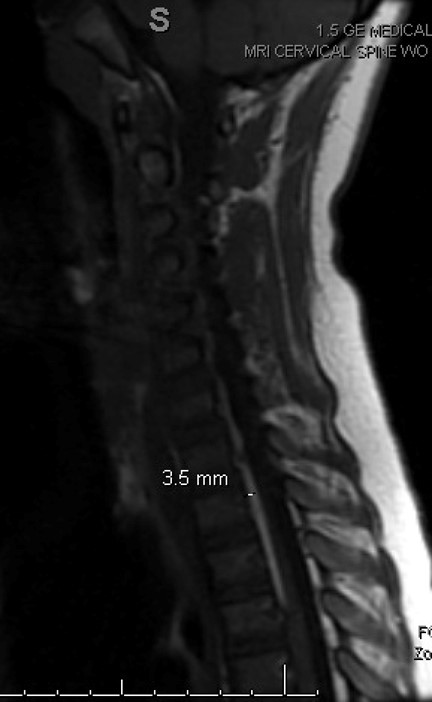
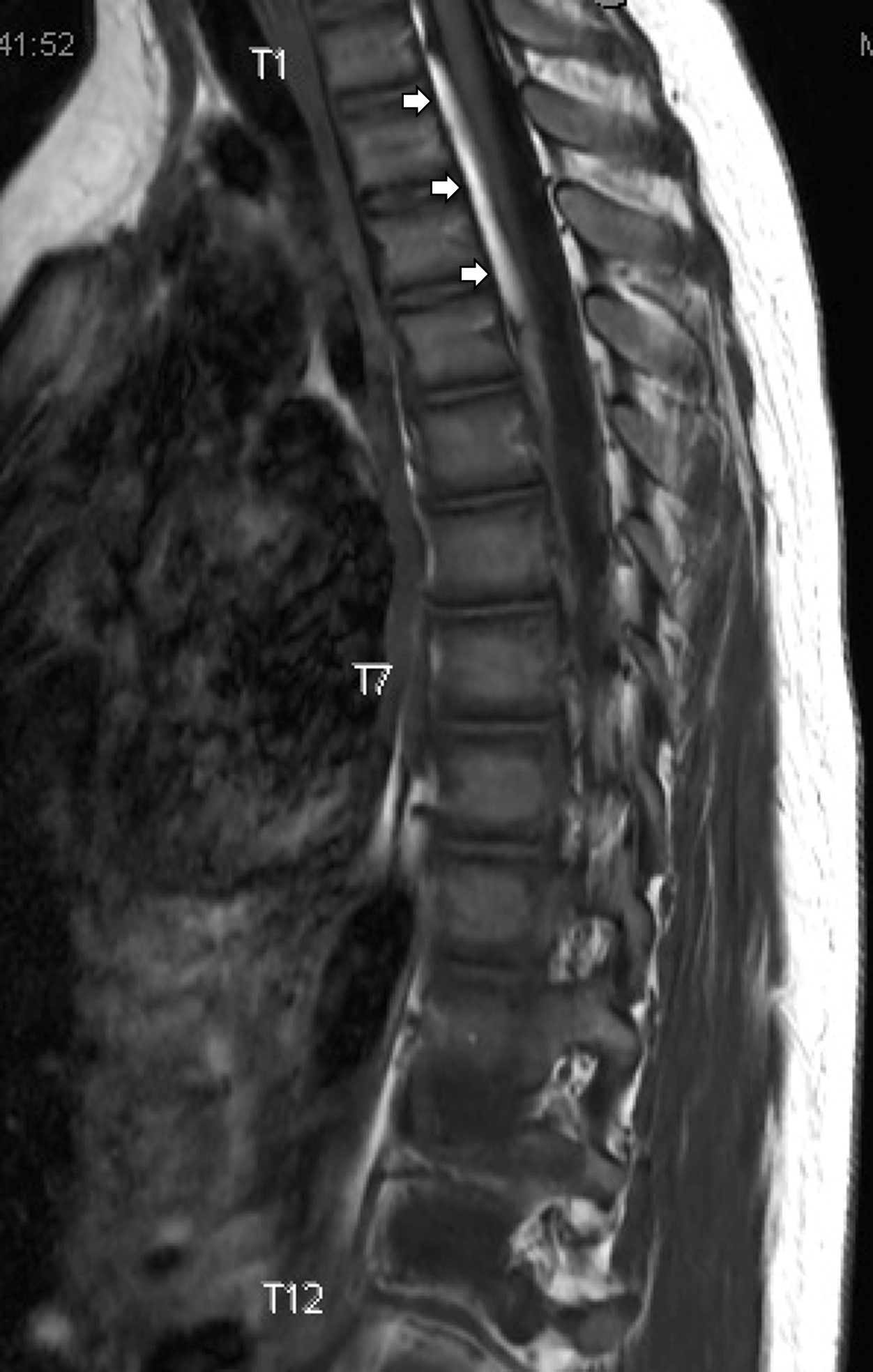
Diagnosis:
Spinal subdural hematomas (SDH) are rare conditions.1,2 Causes of SDH include percutaneous spinal interventions (eg, lumbar punctures, acupuncture3), back surgery, hematologic disorders, anticoagulation use, and/or trauma. Trauma is an uncommon cause of spinal SDH.1
The exact mechanism of SDH amongst trauma patients is unclear. As the subdural space is relatively avascular, it has been postulated that spinal SDHs are the result of downward migration of blood from intracranial SDH.2,3,4 However, it is unclear if these are separate incidences that occur concomitantly.5 In a subset of pediatric patients, spinal SDH can be seen in children with abuse head trauma.6 Clinicians should be aware of this potential injury in trauma patients.
References:
- Hung, KS, Liu CC, Wang CH et al. Traumatic spinal subdural hematoma with spontaneous resolution. Spine 2002; 27: E534-E538.
- Song, JY, Chen YH, Hung KC et al. Traumatic subdural hematoma in the lumbar spine. Kaohsiung Journal of Medical Sciences 2011; 27: 473-476
- Eghbal K, Ghaffarpasand F. An acute cervical subdural hematoma as the complication of acupuncture: case report and literature review. World Neurosurg 2016; 95: 616e11-616e13.
- Matsumoto H, Matsumoto S, Yoshida Y. Concomitant intracranial chronic subdural hematoma and spinal subdural hematoma: a case report and literature review. World Neurosurg 2016; 90:706e1 - 706e
- Golden N, Asih MW. Traumatic subacute spinal subdural hematoma concomitant with symptomatic cranial subdural hematoma: possible mechanism. World Neurosurg 2019; 123: 343-347.
- Rabbitt AL, Kelly TG, Yan K, et al. Characteristics associated with spine injury on magnetic resonance imaging in children evaluated for abuse head trauma. Pediatr Radiol 2020;50:83-97.

